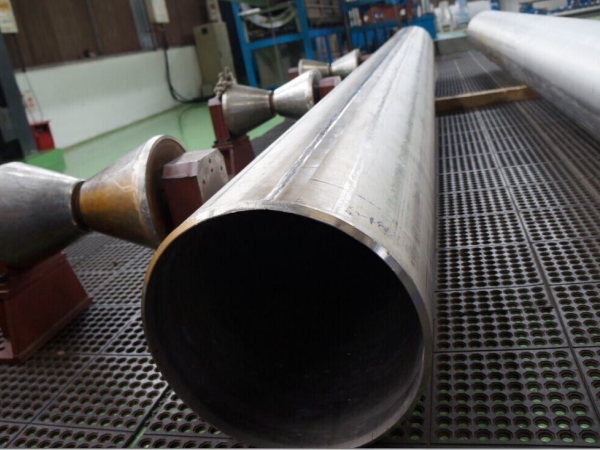Straight seam steel pipes are steel pipes in which the weld seam is longitudinally parallel to the steel pipe. It has the characteristics of simple production process, high production efficiency, low cost and rapid development. Straight seam steel pipes can be divided into high-frequency straight seam steel pipes (ERW pipes) and submerged arc welded straight seam steel pipes (LSAW pipes) according to the production process.
There are many methods to inspect the quality of longitudinal submerged arc welded steel pipes. The most commonly used inspection methods include physical inspection - methods that use certain physical phenomena to measure or inspect and non-destructive testing - including magnetic testing, ultrasonic testing, radiographic testing, Penetration testing, etc. Today, USI Steel will briefly introduce the quality inspection methods of longitudinal submerged arc welded pipes.

1. Magnetic flaw detection
Magnetic flaw detection can only detect surface and near-surface defects of magnetic longitudinal submerged arc welded pipes. It can only conduct quantitative analysis of defects and can only estimate them based on the nature and depth of the defects. experience. Magnetic flaw detection uses the magnetic field magnetization of ferromagnetic straight seam welded pipes to produce magnetic flux leakage to find defects. According to different methods of measuring magnetic flux leakage, it can be divided into magnetic particle method, magnetic induction method and magnetic recording method. Among them, the magnetic particle method is the most widely used.
2. Penetration testing
Penetrant testing uses physical properties such as the permeability of certain liquids to discover and display defects, including color inspection and fluorescence inspection, which can be used to inspect defects on the surface of ferromagnetic and non-ferromagnetic materials.
3. Ray detection
Radiographic inspection is an inspection method that uses radiopaque materials and attenuation in the materials to find defects. According to the different rays used for flaw detection, it can be divided into three types: X-ray flaw detection, gamma ray flaw detection, and high-energy ray flaw detection. Due to different methods of displaying defects, each type of radiographic flaw detection is divided into ionization method, fluorescent screen observation method, photography method and industrial television method. Radiographic flaw detection is mainly used to inspect defects such as cracks, incomplete penetration, pores, and slag inclusions in the welds of straight seam submerged arc welded straight seam welded pipes.
4. Ultrasonic flaw detection
When ultrasonic waves propagate in homogeneous media such as metal, they are reflected at the interfaces of different media, so they can be used for internal defect inspection. Ultrasound can detect defects in any weldment material and any part, and can more sensitively find the location of defects, but it is difficult to determine the nature, shape and size of the defects. Therefore, ultrasonic flaw detection of LSAW straight seam welded pipes is often used in combination with radiographic flaw detection.